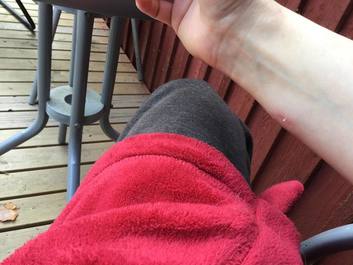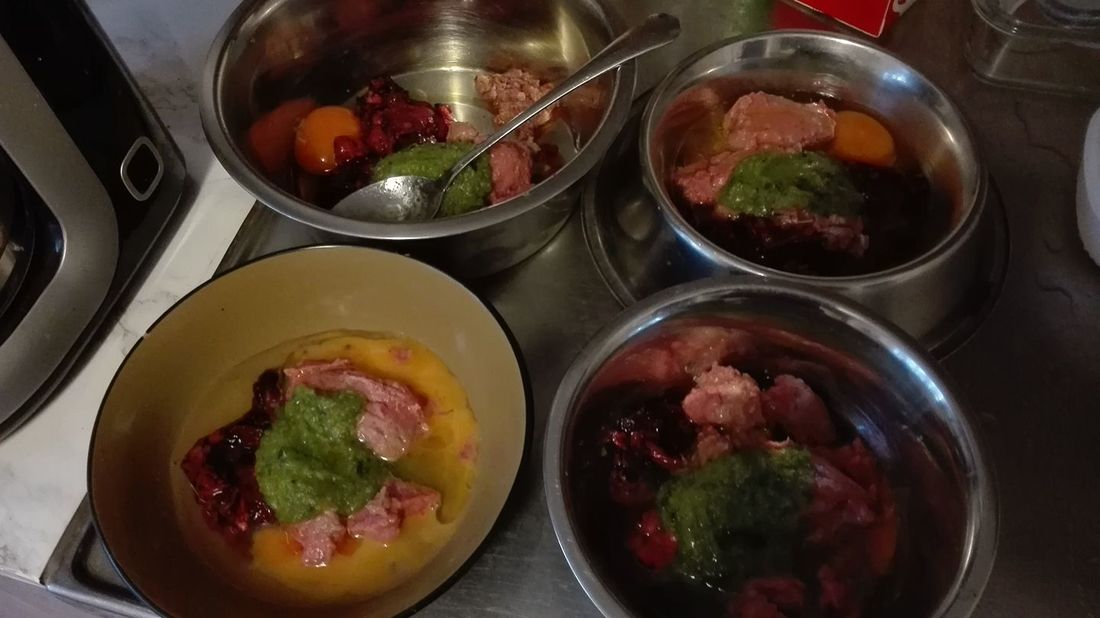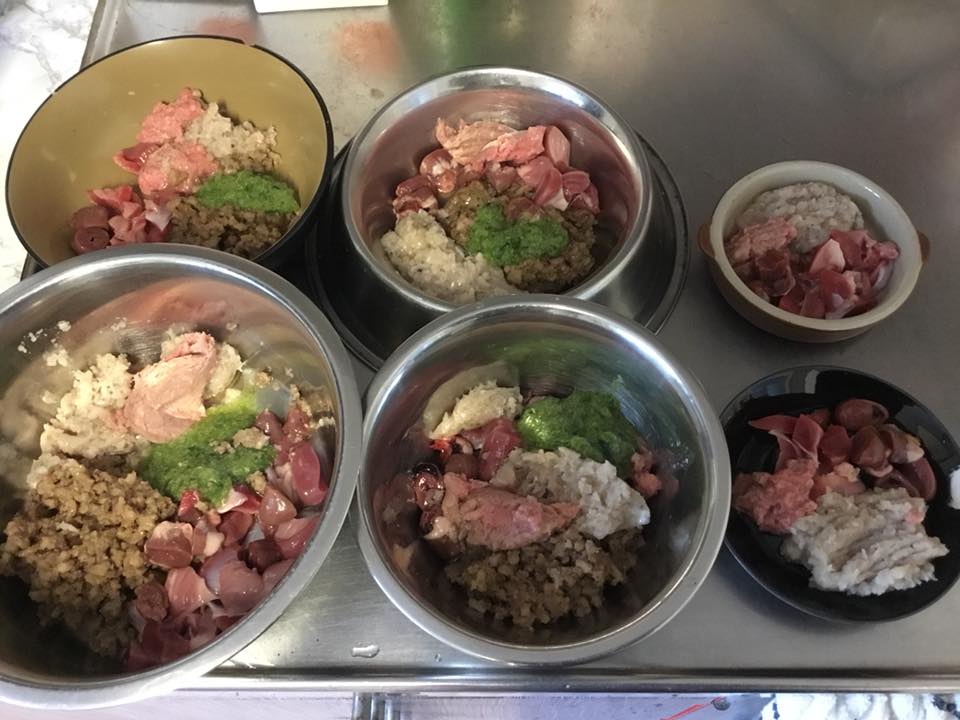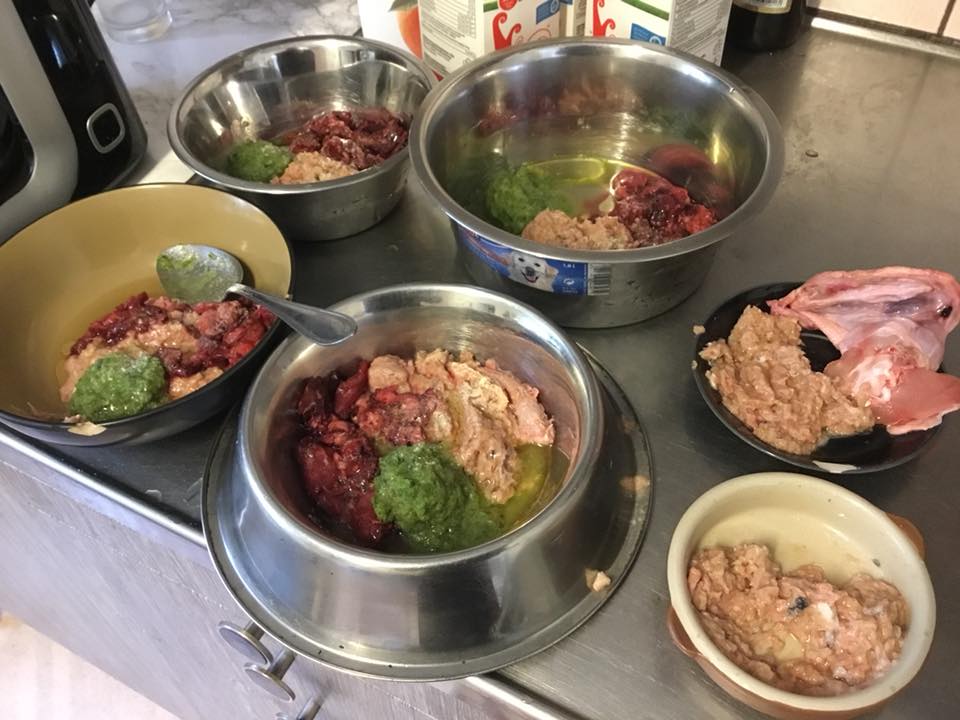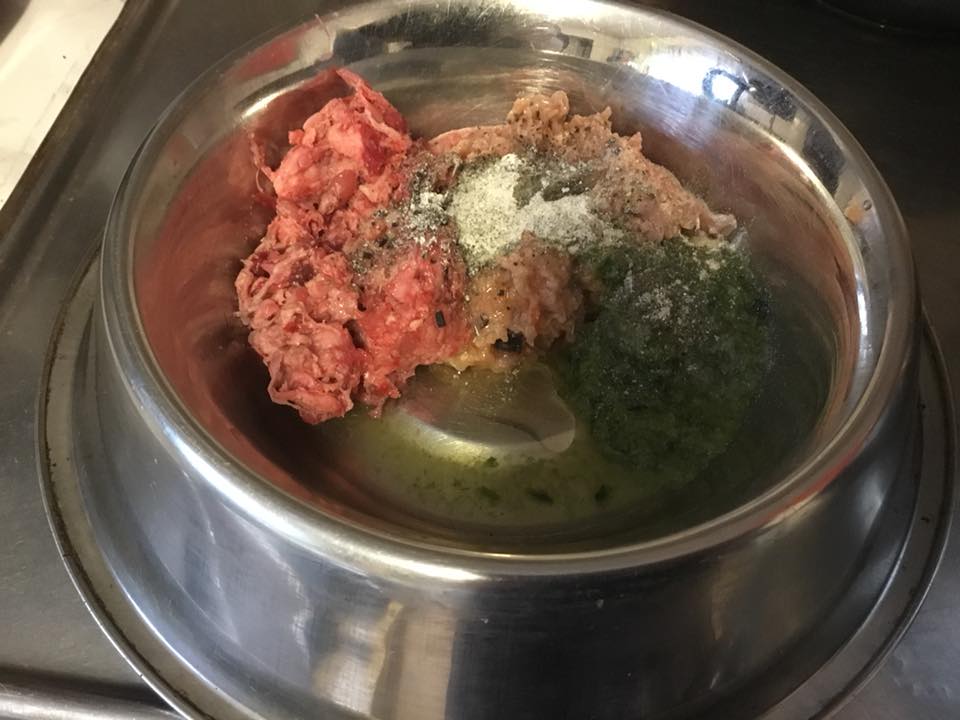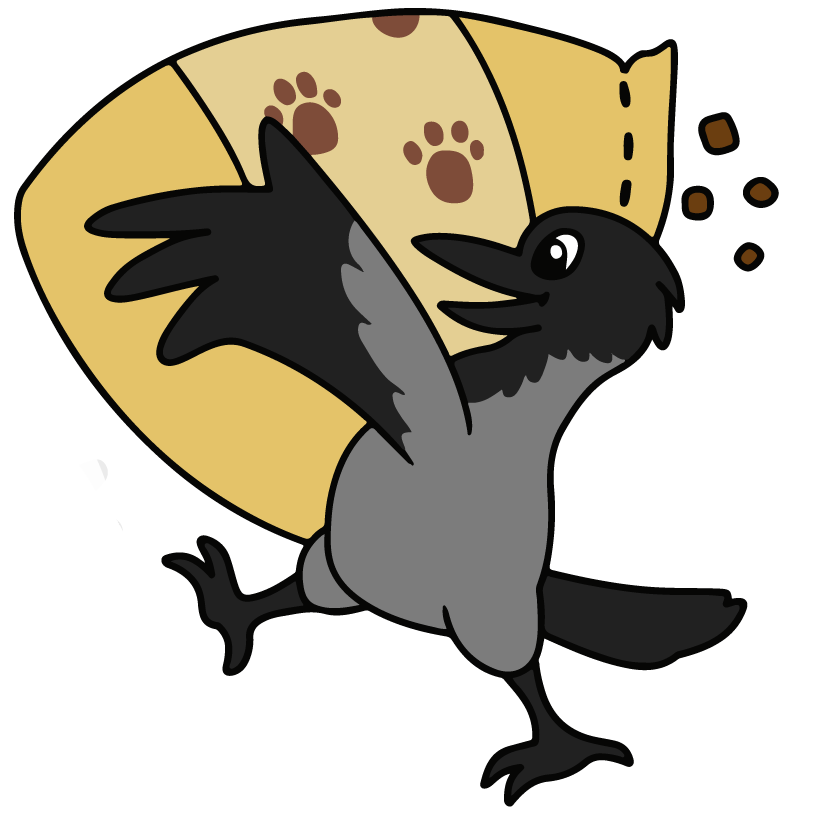A little while ago I wrote about how you need to socialize your dog properly, pert of this being you need to make your dog tolerate children. Not be their best friend, not all dogs are, but for a working society where we can all live you need to make sure your dog can behave around children, no matter if they are ever going to come to the skin or not. It needs to be able to tolerate their presence without aggression or fear. Now, while we dog owners have responsibilities, parents also have them. Here are some things to remember when you teach your child to behave with a dog – and believe me, it needs to be taught. It does not come naturally. |
| If my hand looks like this after this small indicent he meant no harm with, he was just being inconsiderate, imagine how a small child's face would look. Trust the owner. If she or he says you can't let the child play with the dog ”because he gets so hyper” or ”she is a bit rough”, don't go ”oh, but it doesn't mind, my child's used to it!”. The owner knows the dog he/she shares the house with, and he/she knows whether or not the dog can play with a child safely. |
Correcting is not a bite
I mentioned earlier that the dogs correct each other. They do that with poking with their snout and snapping with their teeth. Mothers do this to pups. Friends do that with each other. Dogs of the same house do that. It's not a sign of being aggressive, it's simply interacting and telling something is not OK. Same goes with growling.
We have unfortunately grown to believe a growl or a snap is a sign of an aggressive dog. We teach out dogs to never growl and we see dogs correcting each other as ”mean”. We expect all dogs are the most docile labs or the most gentle beagles, but that is not true. We have a HUGE variety of breeds and breed mixes and a HUGE variety of temperaments. Some temperaments are more desired with house pets than others, but those temperaments wouldn't probably work with for example a hunting dog or a guard dog or a service dog. Even within just house pets we have many, many, many different dogs that prefer different things.
Some dogs, no matter what their purpose, breed, gender or age, are more prone to correct with a snout poke or a snap. From my own experience, older bitches are more likely to do this than males, but once again, this is just my own experience. Don't use it as a guide and think you can take your child to hug a strange older male because nokkaelaimet.weebly.com said it's OK.
When a snap or a poke happens, even if the skin is not broken (and usually it is not because the dog knows perfectly well how to use it's teeth) it is often labeled a bite and the dog is getting a stigma of being aggressive. REMEMBER; A BITE NEVER LEAVES THE SKIN UNBROKEN. When a bite happens, the dog is wishing to harm. It feels threatened enough to injure to get out of the situation. This is a VERY serious thing, the child often needs medical help after the incident, and we should NEVER let this happen. This is exactly why we should always supervise animals and children together.
If the child cries, but the skin is not broken (or the wound is hardly there) and the dog doesn't seem to be too ”stressed” what has happened is most likely a poke with a snout (and the kid got scared of the hasty movement) or a snap. If we happen to witness the situation, the dog has most likely presented a very wide variety of different calming and warning signals before that; stiff posture, licking of teeth, growling, looking other way eyes enlargened, panting... may they have been clear or not, may there have been many or not, those signals of the dog have been ignored and it moved on to the next phase of trying to solve the situation; physical correction. This is how dogs communicate with other dogs, and because of OUR OWN MISTAKE things have lead to the situation where the dog felt threatened or irritated or both enough to use physical force.
While there is a connection between the tendency to correct and the tendency to bite, most dogs that physically correct never meant to harm the child. They hold no grudge. They simply corrected it in a way their species work. To label this dog aggressive, to put it down or find a new home for it immediately shows our own misunderstanding of the situation and how badly we handled it before the incident. Instead of this labeling we should understand we let this happen, and we should not let it happen again. While in some cases, if the dog is super stressed around the kid in general, it would be best to not let the kid and the dog be together, usually these kind of things don't happen again if we make sure the child and the dog are interacting in a correct, safe way.
A snap or a snout poke is not a bite. Don't call it a bite, and don't see it as an aggressive move from the dog's side only. Something has happened that led to the situation, and most likely it was our mistake that allowed this unfortunate incident. If the situation doesn't result anything more serious than a crying kid with no visible physical harm or a slightly tense dog, move on. Make sure next time you handle things better. Specially if the dog is not your own dog, there are NUMEROUS things you can do to make sure in future your kid stays untouched and the dog doesn't feel threatened by it. You can start by figuring out if you let some of the forbidden things described in this post happen.
Dogs and kids can be terribly good friends and they can do lots of fun things (and get into lot of mischief) together, but this means both of them know how to behave around each other.
Socialize your dogs properly and teach your kids to respectfully treat a dog. This way a dog can really be your kid's best friend.
I sometimes get asked how hard and time consuming raw feeding is, if it is expensive and if it is dangerous to feed 50 / 50. I have answered to most questions in this blog already; it takes some time to get things right, but it isn't rocket sciense, it doesn't take more than feeding good quality kibble and 50 / 50 is an excellent way of feeding your dog. To give some practical example of how our raw feeding is, I decided to make a small post about how it can look. I left out calculated vitamins and minerals, but I will note some things you need to remember if you decide to try them out. Balance is everything and while you can leave something out one day and boost the other, you need to balance it the next day or in near future.
Egg, chopped beef, turkey, grounded salmon and veggie mash (cucumber, broccoli, lettuce) infused with zinc, calcium powder and coldpressed sunflower oil
This is something I do to boost the overall vitamins and minerals in the diet.
Eggs supplement all but C-vitamin and dogs can use everything in the egg easily. It is kind of a superfood for them.
Grounded salmon keeps the amount of vitamin D high enough, so I can be sure today the need is not only met but exceeded.
Beef is rich in zinc, and giving it as chopped meat pieces I can be sure all the vitamins are there. Minced meats often use less rich parts of the carcass too and while those are beneficial in their own way, feeding real full meat is good at least every now and then. It also gives the dogs something to chew on, considering they don't just gulp all and swallow it.
Turkey is a nice light meat that is higher in fat than chicken, but also very well digested by most dogs.
Supplements add to the overall minerals and vitamin E.
Note that this food has no liver and even though an egg gives some vitamin A, you need to add more if you have a large dog or make sure you meet the needs in following days.
Chopped chicken gizzards and hearts, minced turkey, grounded whitefish, liver casserole (raisin free), coldpressed sunflower oil, zinc
Ms. Dominance turned two years old, so I wanted to celebrate giving dogs their ultimate favorite food; liver casserole without raisins. Being ”human food” and all, it is pretty high is fats and salt, so I tried to balance this obvious trash food with some low fat meats.
Chicken gizzards and hearts are not organs for dogs. For them they are actually closer to muscle meat than anything else, since dogs don't need taurin (therefore chicken hearts are seen as organs when you feed ferrets, because they have taurin in them). They are also very low on fat, so they are a good way to raise up protein level without raising the fat level. They are also nice and chew-able food for the dogs to eat.
White fish has over double the amount of vitamin D as salmon. It is, in return, also much lower in fat. Therefore I like feeding it as salmon's replacement every now and then. The only problem is it is also double in prize, so it is a rare delicasy rather than something the dogs eat every day.
Turkey is added for the same reason as before; it is good easily digested meat fit for many dogs.
Chopped beef, grounded salmon, minced turkey and vegetables with coldpressed sunflower oil, zinc and calcium powder
A little less fatty choice for your ”everyday trusty dinner”. Beef has less fat than feeding minced pork/beef and is richer in overall zinc, salmon adds some D and E, turkey is good basic meat with OK vitamin and mineral amounts, and all the add ons balance the diet to meet the basics, if you feed them with ¼, ¼, 2/4 manner (beef, salmon, turkey).
Note that this dinner has no liver, so you need to add some or make sure you meet the needs in following days.
Minced pork, beef, liver and turkey, grounded salmon, vegetables, calcium powder, lactic acid bacteria powder and dried seaweed
At the moment our favorite go-to, because it meets all the needs, has liver for vitamin A, seaweed for iodin and balances the digestive system. Note: I don't add the lactic acid bacteria every day, only a couple of times a week, but I see it as an important part of the weekly diet so I wanted to note it's existence.
If you have an older dog and/or an overweight dog, note that this food is pretty high on fat. To reduce the fat you can replace beef/pork with just minced beef, and/or replace the salmon with white fish every now and then.
Basic mix 2 plus an egg, for the added vitamin boost
Monday
Morning: Basic Mix 2
Evening: Basic Mix 3
Tuesday
Morning: Basic Mix 1
Evening: Basic Mix 1
Wednesday
Morning: Basic Mix 1
Evening: Vitamin Boost
Thursday
Morning: Basic Mix 2
Evening: Birthday Dinner
Friday
Morning: Basic Mix 2
Evening: Basic Mix 2
Saturday
Morning: Basic Mix 1
Evening: Basic Mix 1
Sunday
Morning: Basic Mix 3
Evening: Birthday Dinner (without casserole, replaced with grounded beef and a bit of liver)
So, having a few recipes at hand you are able to form a very balanced weekly diet for your dog that doesn't take that much time. Excluding the birthday dinner, which took some extra time, mixing the meats and dividing them takes so little time I am able to do it before work in the morning without problems. I CAN take my time in the evening, but in the morning we go with the fastest possible solution. Therefore I add supplements in the evening food, excluding oil which is usually divided in two and given both during the morning and the evening.
I hope this was somewhat helpful and also answered to some questions considering how it is to feed your dog with raw. It may seem like a hassle, but when you get down to it, it's pretty simple, fast and doesn't cost any more than any good quality kibble.
Mistä on kyse?
Koko elämänsä koiria harrastaneen raakaruokintafriikin ajatuksia, pohdintoja ja elämää koiralauman kanssa.
Historia
June 2022
October 2021
September 2021
August 2021
July 2021
June 2021
May 2021
April 2021
March 2021
February 2021
January 2021
December 2020
August 2019
January 2019
November 2018
October 2018
September 2018
July 2018
June 2018
May 2018
April 2018
March 2018
February 2018
January 2018
December 2017
June 2017
August 2016
May 2016
February 2016
August 2015
Kategoriat
All
Development
Elekieli
Exercise
Feeding
Health
Koiranlukutaito
Koirarodut
Learning
Näyttelyt
Negative Reinforcement
Oppiminen
Positiivinen Vahvistaminen
Positiivisuus
Positive Reinforcement
Rodunomaisuus
Rodut
Shows
Training

